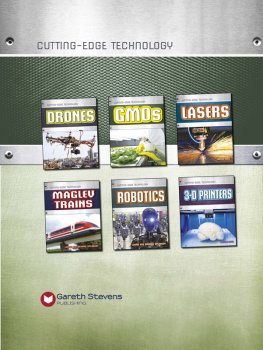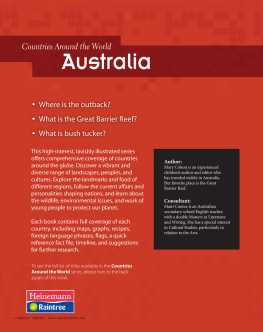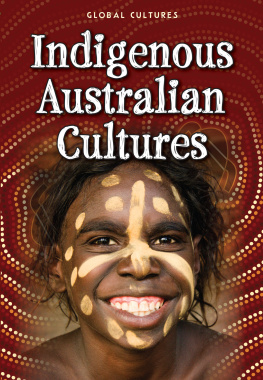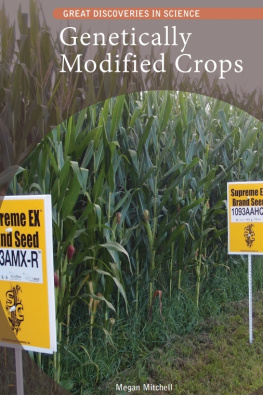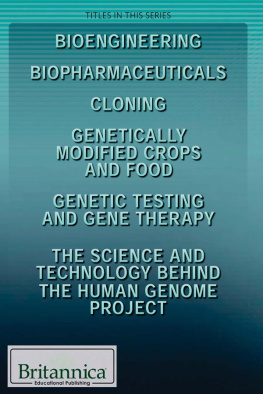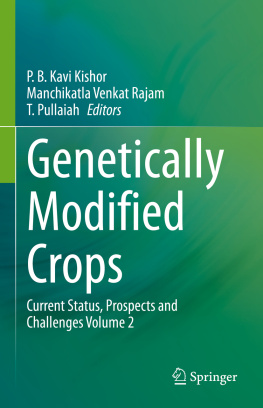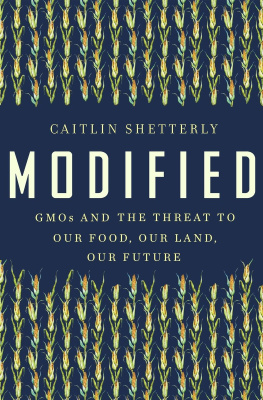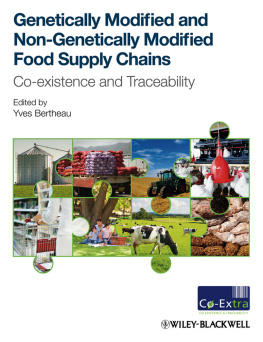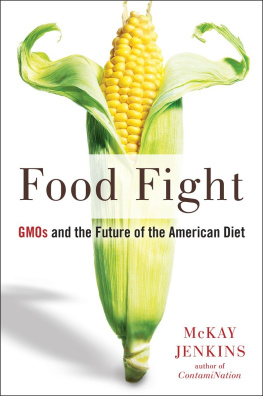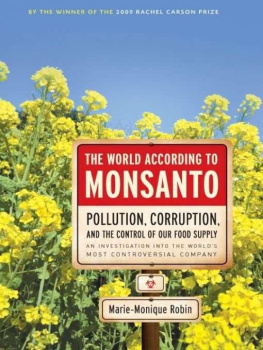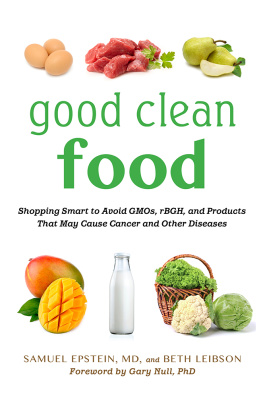Page List

Please visit our website, www.garethstevens.com.
For a free color catalog of all our high-quality books,
call toll free 1-800-542-2595 or fax 1-877-542-2596.
Cataloging-in-Publication Data
Names: Colson, Mary.
Title: GMOs / Mary Colson.
Description: New York : Gareth Stevens Publishing, 2017. | Series: Cutting-edge technology | Includes index.
Identifiers: ISBN 9781482451634 (pbk.) | ISBN 9781482451573 (library bound) | ISBN 9781482451450 (6 pack)
Subjects: LCSH: Genetically modified foods--Juvenile literature.
Classification: LCC TP248.65.F66 C65 2017 | DDC 641.3--dc23
First Edition
Published in 2017 by
Gareth Stevens Publishing
111 East 14th Street, Suite 349
New York, NY 10003
2017 Gareth Stevens Publishing
Produced for Gareth Stevens by Calcium
Editors: Sarah Eason and Harriet McGregor
Designer: Simon Borrough
Picture researcher: Rachel Blount
Picture credits: Cover: Getty Images: Zomi (photo), Shutterstock: Eky Studio (banner), Shutterstock: R-studio (back cover bkgrd); Inside: Shutterstock: 06photo 16, Angellodeco 35, Mikkel Bigandt 23, Featureflash 24, Szasz-Fabian Jozsef 8, Kalewa 27, Oleksiy Mark 7, Miroslav K 30, Natursports 33, Palenque 42, Pedrosala 5, Promotive 41, Cheryl Ann Quigley 13, Zeljko Radojko 11, Pete Saloutos 37, Nick Starichenko 15, talseN 21, Vlad Teodor 45, Vivid Pixels 28; Utah State University: Lewis Spider Silk Laboratory 39; Wikimedia Commons: www.glofish.com 1, 19.
All rights reserved. No part of this book may be reproduced in any form
without permission from the publisher, except by reviewer.
Printed in the United States of America
CPSIA compliance information: Batch #CS16GS: For further information contact Gareth Stevens, New York, New York at 1-800-542-2595.
CONTENTS
I n laboratories all over the world, scientists are experimenting with the microscopic, or very tiny, chemical building blocks of life itself, called genes. By using, mixing, and changing genes, scientists have already created fish that glow in the dark, plants that can kill their own pests, and farm animals that produce more milk or meat. The technology could mean the future of the human race will be modified too.
WHAT ARE GMOS?
Genetically modified organisms (GMOs) are what we call plants and animals that have been genetically altered by scientists. They exist in many areas of our daily lives, from pets and food to medicine and agriculture. If we modify or change genes, we can create new species, make crops pest-resistant, and in some cases even cure diseases. In time, genetic modification (GM) might also save lives. But what is the catch? Is it all too good to be true?
USES OF GM
GM is one of a number of new sciences called biotechnology. This branch of science allows scientists to put living things to new uses, such as producing new medicines. GM changes the genes and therefore the characteristics of a plant or an animal. It makes it possible to transfer genes from one species to another. When scientists genetically modify a plant, they insert a foreign gene into the plants own genes. This might be a gene from an organism that is resistant to pesticide. The plant adds the new gene to its own genetic code and also becomes pesticide-resistant.
CUTTING EDGE
The latest must-have GM animal is a glittery gold sea horse. Scientists in Vietnam mixed gold dust with jellyfish proteins. This was then inserted into sea horse eggs using the cutting-edge gene shooting method. For more on how this method might be used for treating currently incurable human diseases, see page 28.

Genetically modified foods are first grown under carefully controlled conditions in a laboratory. Scientists monitor the plants development closely.
This book looks at GMOs and assesses how they can benefit our lives. It also explores some of the devastating side effects of tampering with nature.
BUILDING BLOCKS
A ll life on Earth, from tiny microscopic bacteria and plants to humans and blue whales, has genes. A gene is a code that governs how a life form appears, develops, grows, and what characteristics it has. Genes will decide what color a flower is or how tall a plant can grow.
WHAT IS IN A CELL?
A cell is the basic structural unit of all living things. It holds the biological information to keep an organism alive. Living things can have one cell, like bacteria, or they can have many billions, like humans. Each different type of cell has a different purpose. For example, some of the cells in the human body control the nerves while others control eye color. A human body has more than 200 different types of cell, all doing a different job to help the body function. There are blood cells, bone cells, and cells that make up muscles.
INHERITED FEATURES
The nucleus is the control center of a cell. Here, all of an organisms genetic information is stored. Humans get half of their genes from their mothers and half from their fathers. Genes make animals look like their parents, so a human child may have brown eyes like its father. A baby zebra has stripes and a leopard has spots because their parents passed on these features through their genes. Like people and animals, the characteristics of a plant will be transferred to its offspring, so oak seeds can only grow into oak trees and so on.
GENETICS GENIUS
Gregor Mendel (18221884) was an Austrian monk who studied genetic inheritance in pea plants in his monastery garden. He grew more than 10,000 plants and studied them closely. He realized that genes come in pairs, with one gene inherited from the mother and one from the father plant. Today, Mendel is considered the father of genetics because his work made everything that followed in genetic science possible.

This is a deoxyribonucleic acid (DNA) molecule. If you unravelled all the DNA molecules in your body and placed them end to end, they would stretch to the sun and back several times!
All genes, whether they are human, plant, animal, or bacterial are created from the same material. This material is called DNA. It is a mix of four different chemicals arranged in a variety ways to make each person, creature, and plant unique, or one-of-a-kind.
ADAPTING NATURE
S ince Gregor Mendels breakthrough in the mid-nineteenth century, the study of cell biology has caused both fascination and fear. If scientists know how the human body works, they can look for cures for all sorts of medical problems such as poor eyesight, inherited diseases, and even organ failure.
CHEMICAL CHARACTERISTICS
In 1869, Swiss physician Friedrich Miescher (18441895) identified a chemical that he named nuclein. Today, we call this DNA. Following this, many scientists studied the idea of inherited characteristics, both in plants and in animals. British zoologist Charles Darwin (18091882) proposed the theory of the survival of the fittest. This means that only the strongest individuals of any plant or animal will survive.

